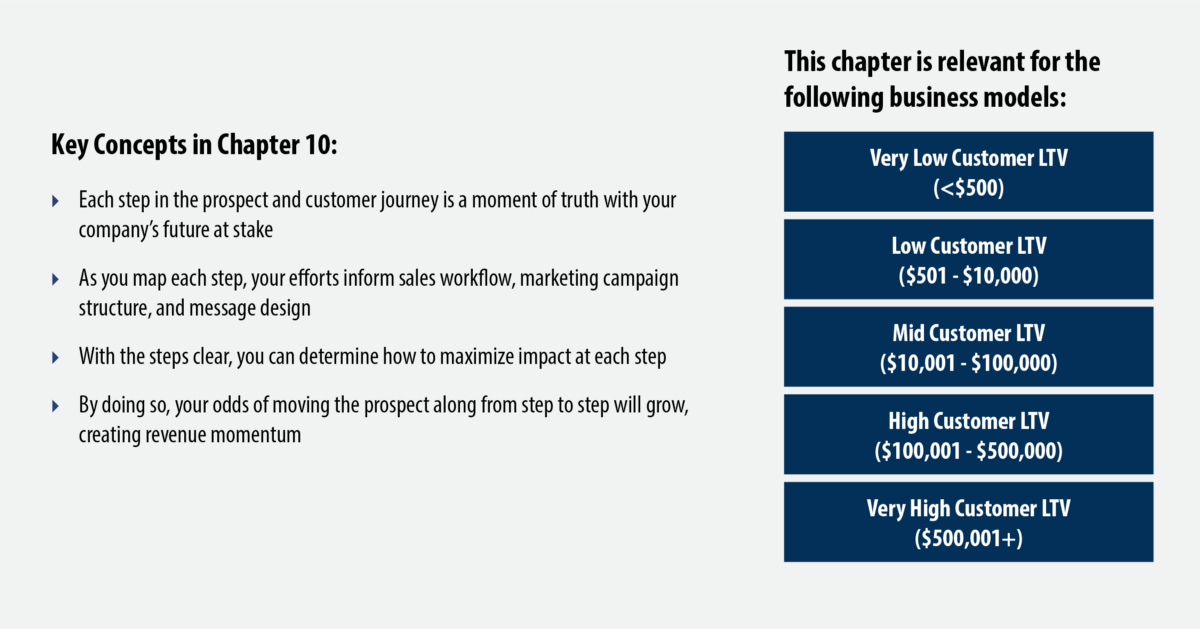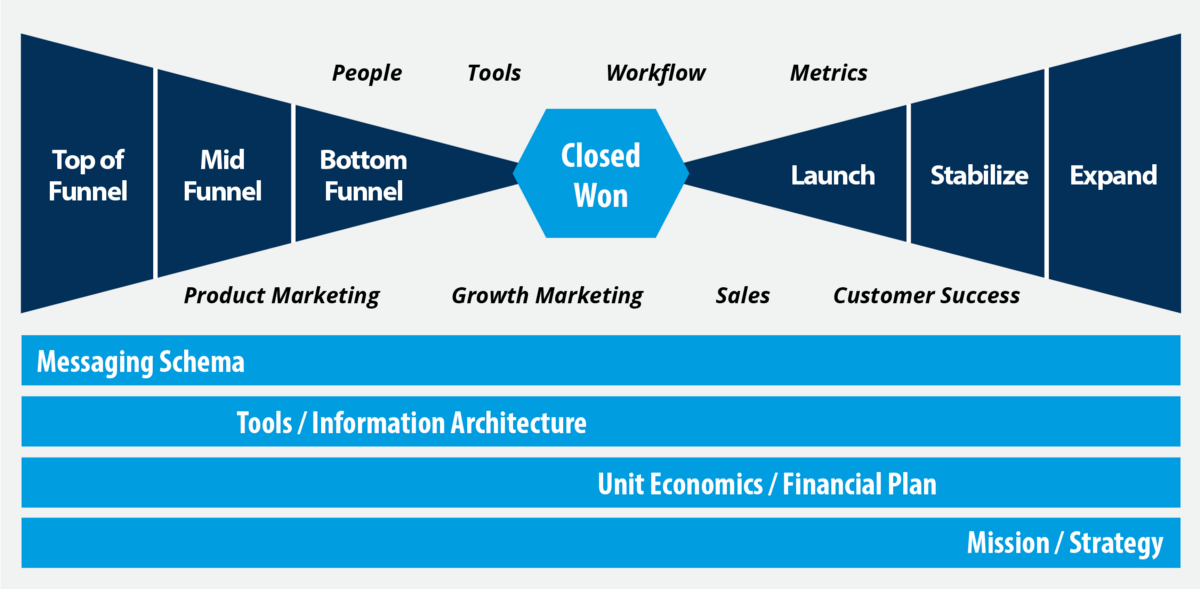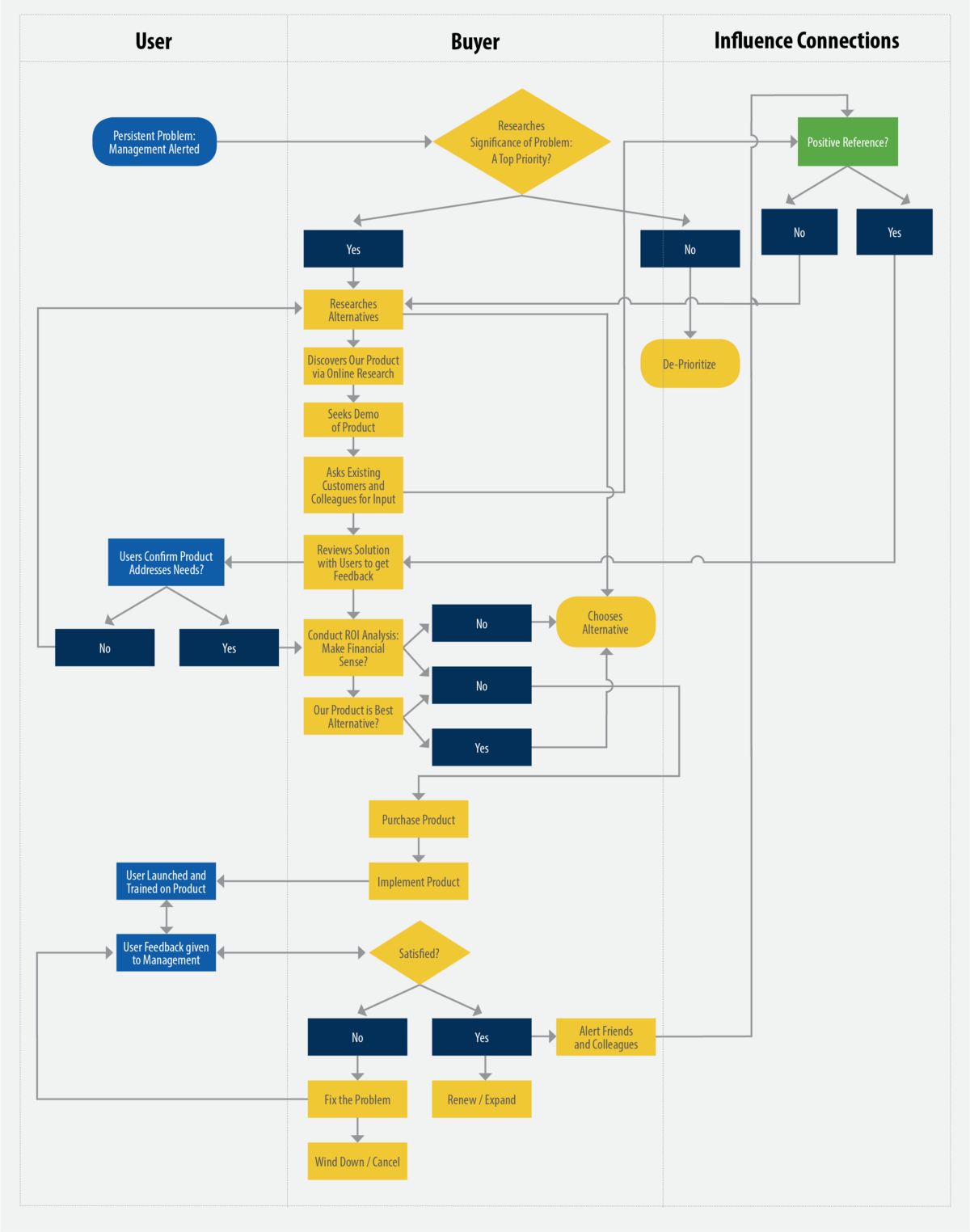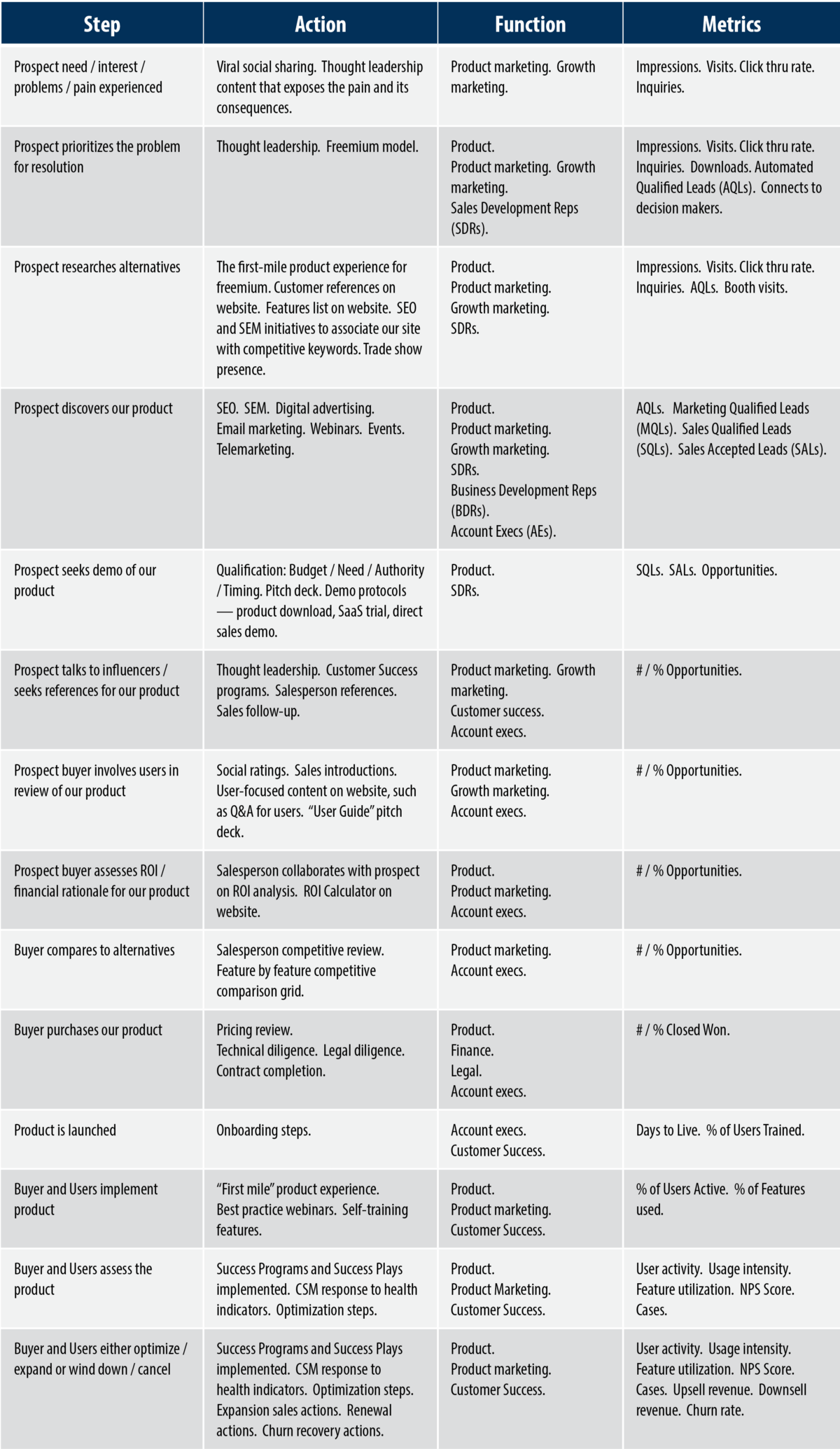You win the jackpot when your journey becomes a jet stream.

You’ve defined your priority customer segments. Your team is clear on your target users, the value your product provides, and its competitive advantages. You are consistent with your brand, and you are priced and packaged to disrupt and win. The next step in the execution of your mission and strategy is to define a crystal clear prospect and customer journey.
It’s all one journey — comprised of both prospect and customer steps — from awareness, to consideration, to purchase, to implementation, to expansion. You seek to maximize reach and conversion. At Top of Funnel, the goal is to cast a wide net, at least within your high priority segments. From then on, the goal is to continue to deepen the prospect or customer’s commitment, so they proceed on the journey towards purchase or expansion.

The degree of customization and the amount of human intervention needed along the journey vary based on business model. Both of these factors increase as customer LTV rises. For example, if your product is a media website, a B2C marketplace, or a freemium SaaS product with a very low LTV (under $500), the journey will be the same for all prospects and customers. It will most likely exist entirely in the digital domain. However, if your product has very high LTV (greater than $500,000), the journey will be multifaceted and account specific — including online content, emails, calls, trade shows, lunch and learns, in-person meetings, and so forth.
Don Loonam is CEO of AcademixDirect, a fast-growing company that built a powerful enrollment platform for accredited online degree programs offered by not-for-profit and for-profit colleges.
The secret to the company’s success is the diligence with which Don and his team mapped every possible pathway of a prospective student from initial interest in a degree program to final enrollment.
His pathway map spreads like a complex root system. The team considered each step with precision, optimizing message content and delivery. Measures are in place for each step. Importantly, the team continuously reviews each step to identify the potential for further optimization. Whatever can be automated is automated, and any steps requiring human intervention have tight scripts and clear performance metrics. Don and his team bring together people, processes, and technology with exacting rigor to yield maximum reach and conversion.
Regardless of your business model, the stages of the journey are consistent, at least at a high level:
- Prospect need / interest / problems / pain is experienced
- Prospect prioritizes the need, interest, problem, or pain for fulfillment or resolution
- Prospect researches alternatives and seeks input of influencers
- Prospect discovers our product
- Prospect seeks to try / test / demo our product
- Prospect (buyer) talks to influencers / seeks references for our product
- Prospect (buyer) involves other users in review of our product
- Prospect (buyer) assesses ROI / financial rationale for our product
- Prospect(buyer) compares to alternatives
- Prospect (buyer) purchases our product
- Customer (buyer / user) experiences launch of our product
- Customer (buyer / user) begins to implement our product
- Customer (buyer / user) experiences our support in the use of our product
- Customer (buyer / user) assesses our product
- Customer (buyer) decides whether to optimize, expand, wind down or cancel our product
It’s helpful to capture these steps in a flow chart so you can visualize the prospect’s and customer’s product consideration points.

By breaking out these steps, you can identify actions and metrics to measure and positively influence the outcome of each step. This work is developed more completely in your Messaging Schema, but at a high level it looks something like this:

Depending on your product and target customer, it may make sense to create segment-specific or persona-specific variations of the prospect and customer journey. This exercise might deepen visibility into variations in decision-making factors and decision process steps for prospects and customers in different top priority segments.
Clarifying the prospect and customer journey steps is foundational. It allows you to isolate the actions, functions, and results metrics related to each.
You can then track performance at each step which will inform everything, including product design, messaging, online demand generation activity, thought leadership, sales actions, and customer success support.
As noted in Chapter 7 — Brand Identity, there are three stage-based objectives in messaging. The first is vision lock, “I get what you do and why it’s relevant to me.” The second is conviction lock, “I’m convinced. Sign me up.” The third is advocacy lock, “I’m a raging fan.” When you join the messages that achieve each of these “locks” with the appropriate steps in the prospect and customer journey, you optimize the potential for your prospect or customer to move steadily from step to step.
This foundational work also supports channel strategy. With a clear understanding of the prospect and customer journey, you can more easily identify the partnerships that increase prospect access or improve conversion. For instance, back in the early 2000’s, CareerBuilder determined that a substantial number of job seekers were going to MSN Jobs and AOL Jobs to find job postings. So the company worked hard to beat out Monster for the channel partner rights to populate the job postings in those two locations. By winning those two partnerships, CareerBuilder surpassed Monster in traffic volume, and ultimately beat them in revenue.
All steps in the journey are moments of truth. At each step, you must take the actions necessary to win or keep your customer. If you act well, you gain competitive advantage.
You win inch by inch, step by step.
To view all chapters go here.
. . .
Please visit us at CEOQuest.com to see how we are helping tech founders and CEOs of startups and growth-stage companies achieve $10m+ exit valuation.
. . .
Notes:
- Tomas Chamorro-Premuzic, “Does Money Really Affect Motivation? A Review of the Research,” Harvard Business Review, April 10, 2013.
- Frederick Herzberg, “One More Time: How Do You Motivate Employees?” Harvard Business Review, January 2003.
- Laszlo Bock, Work Rules!: Insights from Inside Google That Will Transform How You Live and Lead, (n.p.: Twelve, April 7, 2015).
- Edward L. Deci, Richard Koestner, and Richard M. Ryan, “A Meta-Analytic Review of Experiments Examining the Effects of Extrinsic Rewards on Intrinsic Motivation,” Psychological Bulletin 125, no. 6, (1999): 627.
- Chidiebere Ogbonnaya, Kevin Daniels, and Karina Nielsen, “Research: How Incentive Pay Affects Employee Engagement, Satisfaction, and Trust,” Harvard Business Review, March 15, 2017.
- Tomasz Tunguz, “The Theory and Data Underpinning Sales Commission Plans,” tomtunguz.com (blog).
- “Research from Salary.com Finds Improved Compensation Communications Drive Employee Engagement,” CompAnalyst.com (blog), November 15, 2016.
- Block, Work Rules!.
- Joel and Leo, Buffer Co-founders, “Introducing the New Buffer Salary Formula, Calculate-Your-Salary App and The Whole Team’s New Salaries,” open.buffer.com, November 24th, 2015.
- Block, Work Rules!.

